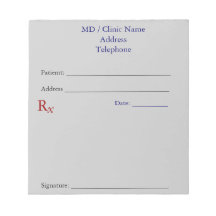One of the greatest and mostly costly areas of variation that physicians control is the selection of the drugs and devices used to treat patients. Lumere recently surveyed nearly 300 physicians to gain insight into what drives their perceptions of clinical variation and the factors that influence their choices of drugs and devices. The results were clear: Physicians crave meaningful data related to cost and variation.
These survey results confirm my profound belief that hospital leaders need to forge deeper partnerships with their doctors to address cost and care quality as well as create the best value for their patients. Here are at four key takeaways from the survey to help better align physicians and administrators.
1. Physicians are lifelong learners, so give them the richest data available.
About 90 percent of respondents felt increasing physician access to cost data would improve quality of care, yet only 40 percent said their hospital had taken steps to do so. The majority of respondents also said they believe physicians should be active participants in creating the evidence-based clinical protocols, practice guidelines and best practices used at their organizations.
Physicians want the total picture. This includes the clinical evidence to choose cost-effective drug and device alternatives without negatively affecting outcomes. Survey respondents with exposure to cost data, variation data and practice guidelines generally found this information more influential than other factors (e.g., industry representatives, costs and hospital preferences or contracts) in their decision to switch drugs or device vendors. This was particularly true for more veteran physicians and those with private practice experience who had greater exposure to managing cost information.
2. Physicians in private practice are equally likely to be cost champions as those employed by health systems.
The survey results show that employed physicians are not inherently more likely to make device selection decisions that benefit their health system’s financial performance. For example, employed and independent surgical specialists reported equally that device cost was “very” or “extremely” influential to these decisions. Additionally, the results suggest that physicians, independent of their health system’s specific alignment models, are more likely to be influenced by device cost when they share in the device management savings (e.g., through a gainsharing model) than when the hospital alone realizes the savings.
3. Physician-Hospital alignment models designed to incentivize cost and quality have an inconsistent impact on physician cost decisions.
Compared to independent physicians who were not part of any alignment model, physicians participating in accountable care organizations, bundled payment and co-management agreements were slightly less likely to be influenced by device cost when the health system saves.
While physicians are more likely to be influenced by device cost when they share in savings resulting from the product switch, these results overall suggest that shared savings might only have a weak effect on physician decision-making.
4. There is a direct correlation between physicians who have experience managing financial performance and how important they consider data.
Lumere’s analysis shows that physicians who have personal experience managing financial performance are more likely to understand the impact of cost-related data, regardless of whether the patient, physician practice or the health system is ultimately responsible for the cost. Additionally, when Lumere looked at the relationship between the level of physician experience with managing provider costs and cost data, we saw that veteran doctors generally found cost data more influential than less-experienced physicians.
Lessons for physicians
The survey takeaways all point to an important question: How should independent physicians approach hospital leaders to encourage greater transparency in data sharing? Here are three steps to get started.
Health systems must ensure that data is organized and presented in a way that is clinically meaningful and emphasizes high quality patient care.
Asking physicians to simply reduce costs can end a conversation before it even starts. To get physicians more involved, analyze cost drivers within the clinical context of improving patient care — that’s the language physicians speak best.
The truth is, many health systems don’t know where to start. Between various data collection systems, varied stakeholder requests and the overwhelming amount of available information, building a robust mechanism for data sharing can be a daunting task. By simply opening the lines of communication, you can begin to overcome any lack of knowledge and institutional awareness about communicating data. Ensuring that physicians have a strong voice in determining which data to share will help create systemwide alignment.
Set benchmarks to help keep you focused on your goals.
Care quality, patient outcomes and cost data should be benchmarked on current evidence-based guidelines and captured in a consistent and usable format. Organizational transparency matters: Health system leaders should acknowledge physicians’ recognition of the relationship between continuity of care and quality of care. Everyone will gain an advantage by openly and transparently engaging with physicians and fostering a culture that uses data analytics to improve the value of care.
Be prepared to collect and manage more data with increasingly sophisticated analytics.
Many health systems are just beginning the journey of managing the abundance of data involved in improving the care they provide. While initial experiences with collecting and analyzing data has been cumbersome, this will improve. Cost and quality data have the potential to dramatically change how physicians practice medicine, since having access to that data leads to improved treatment choices and better outcomes. Meanwhile, patients will have a greater choice in their care and a clearer understanding of what is the best option, both clinically and economically.
As healthcare moves toward value-driven care, physicians and health systems must collaborate to increase care quality and drive cost effectiveness. Taking active steps now to increase physician involvement to meet these goals will only help health systems and physicians do all they can to meet these quality improvement goals together.
15% Off Medical Practice Supplies
 Manual Prescription Pad (Large - Yellow)
Manual Prescription Pad (Large - Yellow) Manual Prescription Pads (Gray)
Manual Prescription Pads (Gray) Manual Prescription Pads (Light Yellow)
Manual Prescription Pads (Light Yellow) Manual Prescription Notepads (White)
Manual Prescription Notepads (White) Manual Prescription Pad (Large - Blue)
Manual Prescription Pad (Large - Blue) Clinic Letterhead (White Linen)
Clinic Letterhead (White Linen) Manual Prescription Pads (Light Pink)
Manual Prescription Pads (Light Pink) Appointment Reminder Cards (100 pack-White)
Appointment Reminder Cards (100 pack-White) Phone Message Notepad (Sky Blue)
Phone Message Notepad (Sky Blue)










No comments:
Post a Comment